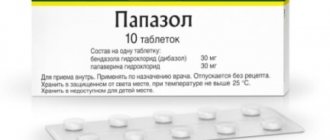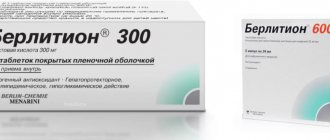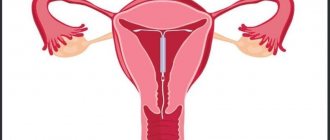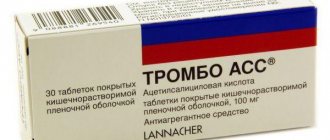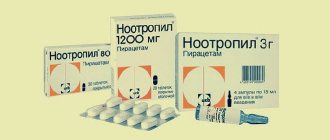Libexin: instructions for use, price
Libexin should be used strictly according to the instructions . The dosage for an adult and for a child is, of course, different, however, the drug in tablets can be taken from 3 years of age. If you decide to give the drug to a child, you must carefully monitor the administration procedure. It may be a little difficult for a child to take the drug, given the lack of a coating on the tablet. In addition, according to the release form, according to the instructions, the child can take no more than 50 mg of the active substance at one time.
Libexin should be given to the child 3-4 times a day, half or a quarter of the tablet. It is better to ask your doctor about the exact dosage in which to give the tablets to your child. Adults can take Libexin one or two tablets , 3-4 times a day.
Do not chew or hold the tablet in your mouth for a long time before taking it. Otherwise, your mouth may become numb. Of course, there is nothing dangerous in this, but the sensations will be unpleasant. When a child swallows a tablet, you should also make sure that the tablet does not linger in the mouth. Many parents pay special attention to this in their reviews. Libexin tablets eliminate cough for a period of 4 hours.
Libexin can be classified as a drug in the middle price category. The average price of these cough tablets is about 390 rubles.
Recommendations
If this medication is prescribed, you need to remember the following:
- The tablet must be swallowed entirely. If you chew it, the oral mucosa will become numb. It's not dangerous, but unpleasant.
- Libexin should not be taken together with other medications that have an expectorant effect.
- If there is no improvement after five days of taking it, consult a doctor.
- During treatment, a significant amount of fluid enters the body.
The medication affects the ability to control complex mechanisms and vehicles. During therapy, you must refrain from driving a car and work associated with increased danger. This is confirmed by the instructions for use for Libexin tablets.
If the patient does not like to take pills, you can ask the doctor to prescribe an analogue - Libexin Muco in syrup. In this case, the medicine is taken one measuring cup three times. The dosage of syrup for children depends on their age. If the child is from two to five years old, then one measuring spoon twice a day. If more than five, then also one measuring spoon, but three times a day.
Indications for use
Libexin is a symptomatic remedy for the relief of dry cough. It does not cure cough, but only suppresses it. Therefore, libexin is prescribed for coughs without sputum due to acute respiratory viral infections, bronchitis, pneumonia, and emphysema.
It is known that in patients with heart disease (post-infarction cardiosclerosis, severe hypertension, atrial fibrillation, heart defects, and so on), heart failure occurs as the disease develops. One of the clinical manifestations of this syndrome is shortness of breath, which worsens when lying down, for example, at night. This often results in a dry cough. The instructions for use of libexin recommend the use of prenoxdiazine to relieve dry cough in such patients.
Libexin has a local anesthetic effect, so it can be successfully prescribed before such unpleasant procedures as bronchography and bronchoscopy.
Contraindications
- Allergic reaction to prenoxdiazine or other components of the drug.
- Intolerance to certain carbohydrates (galactose, lactose). These conditions can be clinically manifested, for example, by milk intolerance.
- Pronounced production of sputum by the glands of the bronchi (many forms of bronchitis, bronchiectasis, and so on), that is, all conditions in which the cough is not dry, but wet. The use of libexin will lead to stagnation of mucus in the respiratory tract.
- The simultaneous use of expectorant drugs and libexin will also cause stagnation of secretions in the bronchi and progression of the disease.
- Prenoxdiazine is not prescribed in the postoperative period after inhalation anesthesia.
- Relative contraindication – children's age. This drug can be given to a child only after consultation with a pediatrician.
- It is highly undesirable to use Libexin during pregnancy and lactation.
Side effects
The most common side effects are nausea, stomach pain and constipation.
Less common are numbness of the oral mucosa and dry mouth (these effects are not dangerous and are associated with the mechanism of action of the drug). An allergic reaction rarely develops. An urticarial rash (urticaria) or angioedema (Quincke's edema) may appear. Such conditions require discontinuation of the drug.
When taken in high doses, the drug may cause some drowsiness and fatigue. This must be taken into account when driving vehicles and working with moving mechanisms.
An overdose of the drug may result in increased drowsiness. This symptom disappears on its own within a few hours after stopping the medication.
Cough remedy
So, what do Libexin tablets help with and for what diseases are they prescribed? The main active component of this medicine, as mentioned above, is prenoxdiazine hydrochloride, which works in three directions at once. Thanks to it, the intensity of a cough attack decreases and the bronchi expand. It promotes the removal of sputum. Pain is eliminated while eating. "Libexin" not only has an analgesic effect, but also an antitussive and expectorant effect. Its advantages include, among other things, an anti-inflammatory effect.
That is, the use of the described medication helps people with the following:
- Reducing the duration of dry cough attacks.
- Elimination of manifestations of nocturnal suffocating attacks in adults and children.
- Unimpeded removal of mucus.
- Relief from discomfort during swallowing.
- A quick return to the previous rhythm of life.
- A wide range of effects makes it possible to use the medication for various diseases of the respiratory system.
Why Libexin tablets are prescribed is described in detail in the instructions.
Analogs
Libexin has no structural or direct (that is, with the same active component) analogues. But instead, it is allowed to use other drugs from the pharmaceutical group of antitussive medications:
- Rengalin - suckable tablets, their active substances are affinity-purified antibodies to morphine, histamine and bradykinin, are prohibited for use in children under 3 years of age;
- Terpincode H is a combined antitussive medication, the active ingredients are codeine and terpinhydrate, only for adults over 18 years of age;
- Terpincode - tablets with three active ingredients: codeine, terpinhydrate and sodium bicarbonate, approved for children over 12 years of age;
- Panatus is a Slovenian antitussive medication of central action, its effect is achieved by the action of the active ingredient - butamirate citrate - on the cough center of the central nervous system, allowed from 3 years;
- Children from 3 years old can also be given a strengthened analogue - Panatus Forte;
- Omnitus is a Serbian-made centrally acting antitussive with the active component butamirate citrate, approved for children over 6 years of age;
- Codelac Neo is a centrally acting drug for adults over 18 years of age, the active ingredient is butamirate citrate.
Analogues and Price
The original Libexin for cough from a Hungarian manufacturer demonstrates an optimal therapeutic effect. The average price per package is 420-450 rubles. In pharmacies you can find domestic analogues of the drug, but in terms of quality and effectiveness of the corresponding medicines, they may be inferior to the foreign drug. However, everything depends on the individual characteristics of the patient’s body.
Effective substitutes:
- Codelac;
- Rengalin;
- Omnitus;
- Stoptussin;
- Sinekod.
The choice of Libexin analogue is made by a doctor. Self-medication is fraught with the development of undesirable consequences and complications.
Mechanism of action
Prenoxdiazine is a peripherally acting antitussive drug. This means that it is used to relieve dry (non-productive) cough and acts at the level of the respiratory tract. Libexin has a good antitussive effect.
Prenoxdiazine causes anesthesia, that is, a decrease in sensitivity of cough receptors in the walls of the bronchi. As a result, impulses from them do not reach the cough center of the brain, and the cough stops.
Libexin has a moderate bronchodilator effect, as well as an anti-inflammatory effect, which further helps reduce the intensity of cough.
The drug does not accumulate in the body and is not addictive.
Distribution in the body
Prenoxdiazine is quickly absorbed from the stomach, and within 30 minutes its maximum concentration in the blood is reached. The effect of one tablet lasts 6–8 hours. It is excreted in the form of metabolites and partly in unchanged form with bile through the intestines, and to a lesser extent through the kidneys with urine.
Side effects
- Sometimes, when treated with Libexin, a child develops an allergic reaction in the form of angioedema or a skin rash.
- The digestive system of a small patient may react to the tablets with a dry throat or mouth, as well as temporary numbness of the oral mucosa. Occasionally, taking the medicine causes pain in the stomach, provokes constipation or nausea.
- If high doses are used, treatment with Libexin may increase fatigue and cause mild sedation.
Review Reviews
Looking at reviews of Libexin tablets, we can conclude that a large number of patients prefer to take the medicine not according to the instructions or as prescribed by a doctor, but on the advice of strangers, including pharmacy workers. Of course, no one questions the competence of the latter with regard to the pharmacological properties of medications. But a pharmacy worker cannot determine what type of cough a person has—productive or dry. Just as the patient himself is not always able to determine whether he has sputum in the bronchi. Therefore, there is so much conflicting information regarding the effectiveness of Libexin.
- Many people write that Libexin tablets are a completely useless medicine if it did not help get rid of a cough even with long-term treatment (obviously, the drug was used for other purposes, that is, they tried to cure a wet cough).
- Some believe that, despite the warnings in the instructions, it is possible to take Libexin together with mucolytics (but not at the same time: for example, during the day - expectorants, at night - an antitussive).
- The high effectiveness of the drug was noted by those patients who took Libexin as prescribed by a doctor.
- Parents of sick children note that Libexin effectively relieves dry cough in children, which prevents them from sleeping at night. It is enough to give one tablet shortly before bedtime - and a good night is guaranteed for the whole family.
All parents who have used Libexin in the treatment of children warn against self-treatment with these pills and advise strictly adhering to dosages.
Instructions for cough tablets "Libexin"
The dosage and duration of administration are determined by the doctor. Self-indulgence in this matter only aggravates the situation. As a rule, adults are prescribed one tablet three to four times a day. If necessary, the single dose is increased to two tablets four times. Adults are prohibited from taking more than nine pieces per day.
The drug is taken with meals. It is washed down with a large volume of liquid and is not chewed. Dosing for children directly depends on their age and weight. On average, half or quarter is given three times. The maximum permissible dose for children per day is two tablets.
What else does the instructions for Libexin tablets tell us?
Important Notes
When studying the annotation for Libexin, it is necessary to pay attention to important features of use - information about compatibility with other medications, side effects, contraindications and overdose.
Let's start with contraindications, since these are the situations in which you cannot drink Libexin:
- the already mentioned lactase deficiency and galactose intolerance;
- condition after undergoing inhalation anesthesia;
- diseases accompanied by increased secretion of bronchial sputum;
- increased susceptibility to any components of the drug.
There is no data on the pharmacological interaction of Libexin tablets with other medications, except for one warning in the annotation.
It is not recommended to combine its use with expectorant and mucolytic medications (thinning bronchial secretions). Libexin will prevent the removal of sputum, which is produced abundantly while taking mucolytics.
The list of side effects is divided into groups according to the frequency of their occurrence:
- with unknown frequency – fatigue, sedation, bronchospasm;
- often – nausea, constipation, epigastric pain;
- rarely - loss of sensitivity or numbness (anesthesia) of the oral cavity, dryness of the mucous membranes of the mouth and pharynx, skin rashes, angioedema.
In case of overdose (cases of which have never been recorded), pronounced manifestations of undesirable effects are expected. In the section on special instructions in the annotation, the possibility of gastrointestinal disorders in patients with lactose sensitivity is allowed.
Use of the drug Libexin
An important advantage for Libexin is the lack of addiction. Patients can safely take Libexin without fear of developing an addiction to the drug. In addition, it does not depress breathing in any way.
Libexin is prescribed as therapy for the following diseases:
- Decreased tone of lung tissue,
- Bronchitis,
- Asthma,
- Pleurisy,
- ARVI and FLU,
- Bronchial type pneumonia,
- As preparation for bronchoscopy.
However, it should be understood that it is recommended to use the drug to relieve cough syndrome . This syndrome greatly interferes with a person’s life due to constant coughing attacks. And in such a situation, Libexin will help relieve the syndrome. The drug does not have a mucolytic effect, which means it does not contribute to the liquefaction and removal of mucus from the bronchi and lungs. It is also not recommended to use the drug together with drugs to remove sputum, since it may interfere with the mechanism of action of the latter. The best solution would be to use Libexin to treat a mechanical cough, when the lungs and bronchi are already clean.
Compound
Libexin tablets are a monocomponent medicine. The active ingredient of the drug is prenoxdiazine. This compound remains a synthetically developed molecule that has beneficial effects on both the ciliated epithelium of the bronchi and individual muscle fibers located around the respiratory tract.
In addition to prenoxdiazine, the chemical composition of the drug contains the following auxiliary components:
- glycerol;
- talc;
- corn starch;
- povidone;
- magnesium stearate and lactose monohydrate.
The mechanism of action of the corresponding drug is based primarily on the inhibition of peripheral sensory receptors in the respiratory tract, which are irritated and provoke cough.
Libexin has three key effects on the patient's respiratory tract:
- Local anesthesia. By reducing the sensitivity of the epithelium lining the respiratory tract, the severity of cough decreases;
- Dilatation of the bronchi (bronchodilation). Due to the effect on the muscle fibers located around the respiratory tract, air movement accelerates, coughing occurs better;
- Inhibition of the functional activity of the center responsible for the cough reflex, located in the brain. The peculiarity of Libexin remains its weak effect on the central nervous system, due to which the drug gently eliminates cough without the formation of drug dependence.
You need to pay attention to manufacturers
Few people read what is written on the packaging of the drug. The annotations are still more or less scanned, but no one pays attention to what is indicated in small print at the end. But this is in vain. There are often situations when the same medicine, but from different manufacturers, differs in the degree of effectiveness, and radically.
Careful study of the information written on the packaging helps to avoid disappointment. The drug "Libexin" is produced in Budapest. Foil blisters contain twenty tablets of 100 milligrams.
An analogue syrup “Libexin Muko” is produced (France). The volume of bottles for adults is 125, 200 and 300 milliliters, for children - 125 and 200. They are equipped with an aluminum screw cap. The package includes a measuring cup.
What is this drug for?
When starting treatment with Libexin tablets, you need to know exactly what they are prescribed for, so as not to provoke the development of side or unexpected effects. As noted in the annotation for the medication, its therapeutic purpose is recommended for:
- emphysema;
- pneumonia;
- bronchitis;
- flu;
- night cough with heart failure;
- Qatar of the upper respiratory tract and other pathological conditions, against the background of which a non-productive, that is, dry, cough develops.
In addition to these conditions, the indications for use in the annotation are preparatory procedures before bronchographic or bronchoscopic examinations. From all this it follows that Libexin is a tablet for dry cough.




